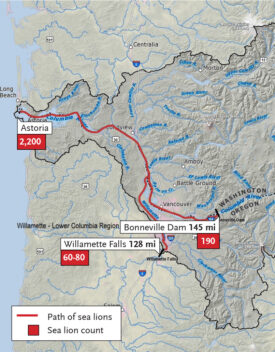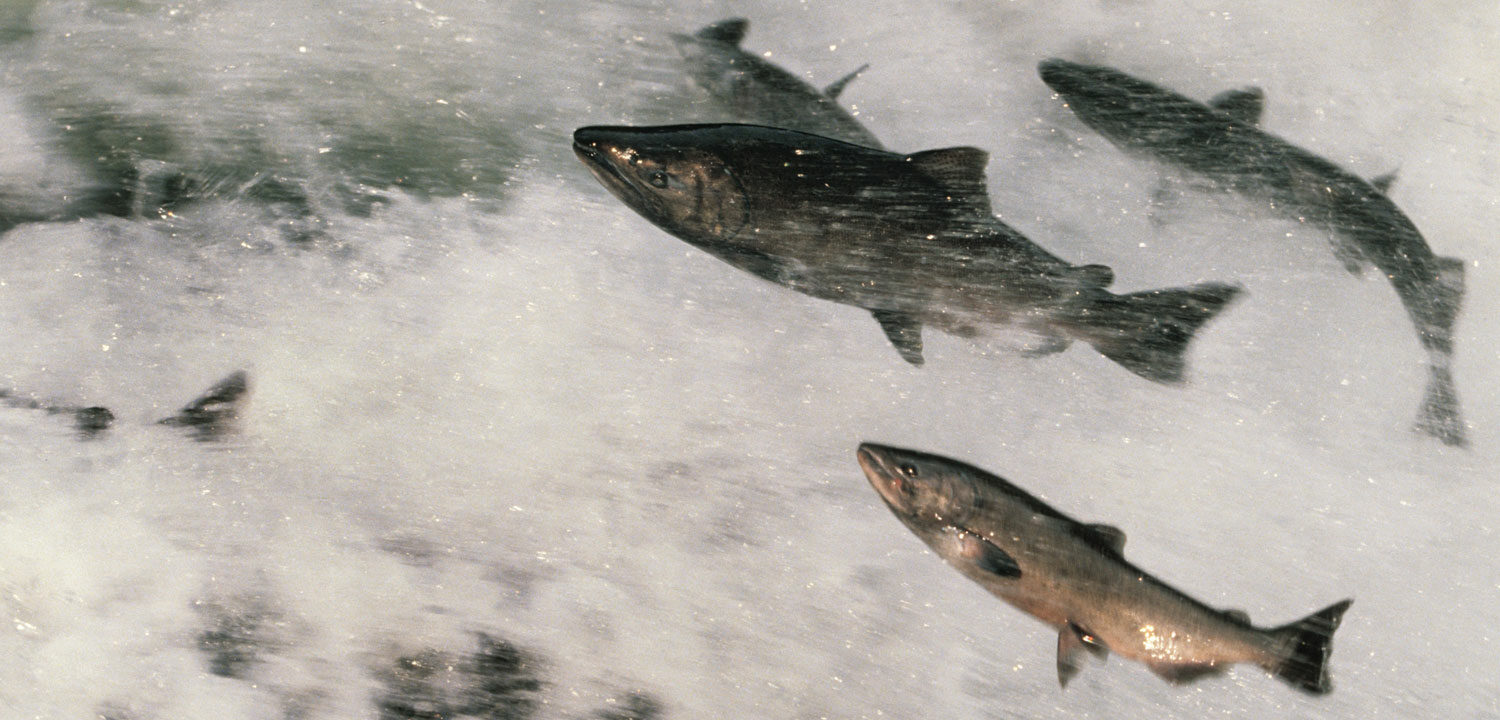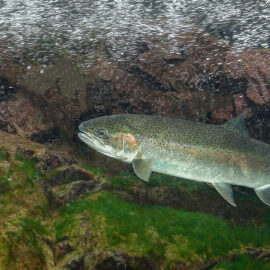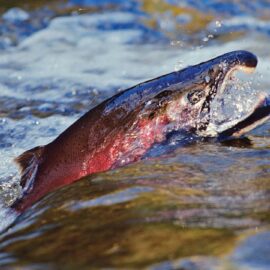Snake River dam removal, sea lion control, and spilling water through the dam system are all options we need to pursue simultaneously.
The tragedy of ecosystem decline in the Columbia River Basin captured worldwide attention this summer in the form of starving orca whales in Washington waters. An orca carrying her dead calf for 17 days reinforced the idea that salmon are the keystone species in this system: their decline triggers a host of negative consequences throughout the region. Without strong salmon runs, our resident orca populations will not be well fed and healthy. This summer’s terrible dose of reality amplifies the urgency for advancing viable salmon recovery options in the Pacific Northwest.
Wild Salmon Center sees several actions that need to move forward now to recover salmon in the Columbia Basin system. The long-delayed removal of Snake River dams would deliver the biggest benefit to Columbia salmon runs. As the political will builds for that, we also need to spill extra water through other dam spillways, and pursue the targeted removal of sea lions.
The future survival and recovery of Columbia Basin salmon depends on the genetic and life history diversity within all the seasonal runs of salmon and steelhead in the system. To protect that diversity and the resilience of salmon in the system, salmon advocates must push forward these measures, as well as fishing harvest reform, salmon hatchery reform and more, all at once, to truly fix myriad problems in the vast watershed.

A bill now moving forward in Congress tackles the impact that expanding sea lion populations are having on some specific Columbia River Chinook and steelhead populations. These populations are already suffering due to a combination of stressors, including bad ocean conditions. Sea lions are hitting them hard where they are most vulnerable: they are eating salmon just as they are moving into their home rivers to spawn. (See our sea lion fact sheet for more information)
The federal bill (H.R. 2083, the Endangered Salmon and Fisheries Predation Prevention Act), which passed the House with unanimous support of the Pacific Northwest delegation and has been introduced by Sen. Cantwell in the Senate, would allow state and tribal fisheries managers to lethally remove problem sea lions in a timely way at targeted choke points in critical spawning rivers of the Columbia. The language in the sea lion removal bill now before Congress is result of more than a year of negotiations between Tribes, the three States, and multiple members of the Northwest Delegation. It is supported by the governors of all three states. The bill enables state and tribal fisheries managers, for the first time, to respond before sea lions become habituated to a place and increase to overwhelming numbers, in order to protect endangered and vulnerable wild fish runs in the Columbia River basin.
Science research and experience at Bonneville Dam suggests that a rapid, proactive approach to removal will be more effective than waiting until sea lions become established in a particular place.
Wild Salmon Center supports this bill, but we don’t do this lightly. We realize there are hard decisions that need to be made if we want to make sure key endangered and threatened runs of fish, including some populations of wild spring Chinook and winter steelhead, don’t die out on our watch. If we lose any of these locally adapted populations, they will not come back, and it is this diversity that is the key to resilience and adaptation to a changing and heavily-impacted Columbia River system.
Sea lion predation risks the extinction of some of these wild populations such as the John Day spring Chinook, Snake River B run steelhead or Willamette River winter steelhead. In some years, sea lions may have been eating up to 43% of endangered spring Chinook runs in the Columbia, according to a NOAA report. Last year, a record low 512 Willamette River wild winter steelhead passed Willamette Falls, a choke point in the river where a pack of sea lions has set up shop.
This bill is just one important part of a comprehensive approach on salmon recovery. Wild Salmon Center will continue to support efforts underway to meet the court-ordered requirements to spill extra water through dam spillways in the Columbia system. This is an action that has already shown higher returns of spawning fish, during limited testing. (See our Columbia spill fact sheet for more information)
We also believe it is time to move forward with Lower Snake River dam removal. While this option will take more time to bring all Northwest constituencies on board, we believe that it is possible and hugely important. Strong education and scientific debate across political lines and geographic boundaries can lead us to make the hard choices that advance the interests of salmon, Northwest ecosystems and communities.
As the orcas in Puget Sound remind us, the consequences of inaction are high.
WILLAMETTE UPDATE, FALL 2019: After persistent problem sea lions were removed at Willamette Falls in late 2018 and spring 2019, steelhead and Chinook numbers have trended upward. Time will tell whether this targeted removal has long-term benefits for salmon and steelhead.



